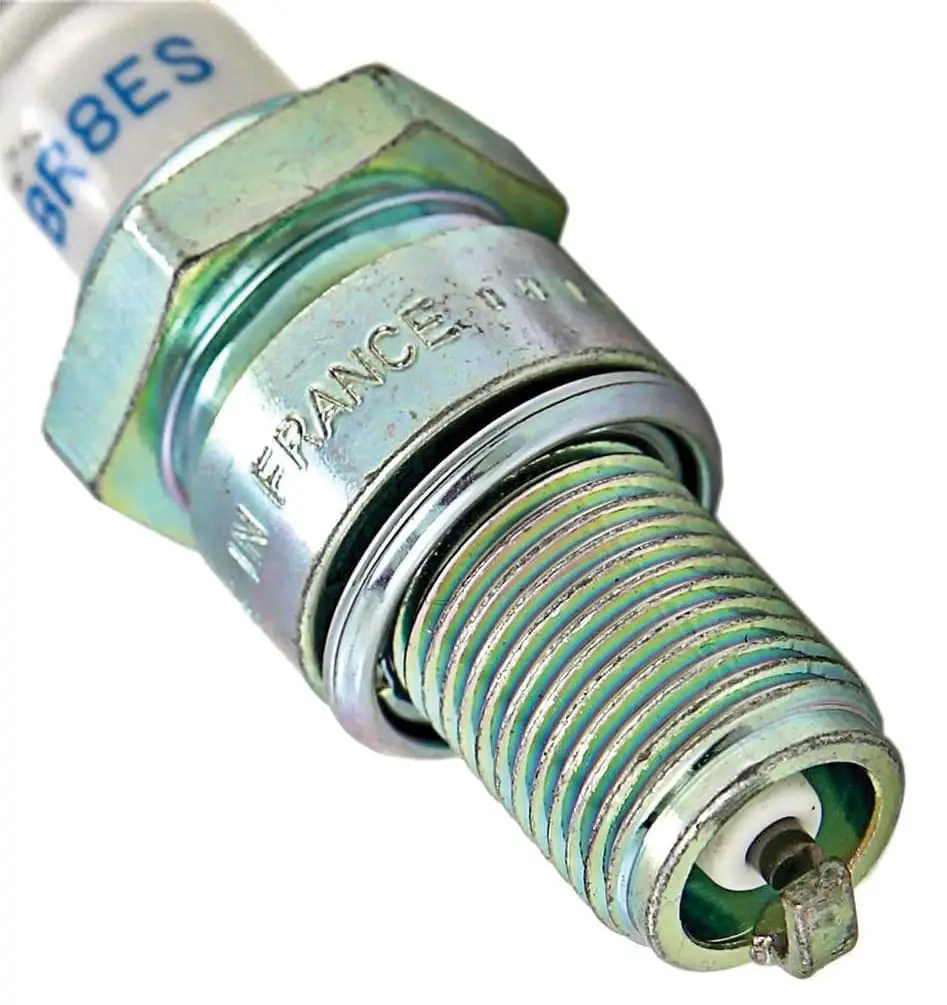MXA TECH SPEC: TWO-STROKE SPARK-PLUG HEAT RANGES
Spark plugs come in different heat ranges. To make it easy for you to see the heat range of your spark plug, the number is printed into the plug’s part number. Here is how it works. The smaller the number, the hotter the plug. Plugs with a “7” heat range are hotter than “8” plugs, which are hotter than “9” plugs. Contrary to a popular misunderstanding, a hotter or colder plug doesn’t make a hotter (and bigger) or cooler (and smaller) spark. A plug’s heat range only dictates how quickly a plug allows the transfer of heat to the cylinder head or water jacket. A higher heat range means the plug will cool slowly, causing it to stay hotter during operation, while a cooler plug dissipates heat more quickly and runs at a colder temperature.
If the heat range is too high for a particular engine, it will allow the combustion chamber to create hot spots that cause the engine to detonate. If the heat range is too low, it will never retain heat long enough to burn off excess carbon deposits, which will continue to build until fouling occurs. Although it’s always best to stick with the factory-recommended heat range at the start of a new bike’s life, it’s no secret that tuners will run different heat ranges to better complement specific tuning setups or different riding and track conditions.
Do not experiment with hotter or colder spark plugs unless you have experience reading spark plugs or were instructed by a reputable tuner; however, every two-stroke rider worth his weight in iridium has replaced his bike’s NGK B8ES plugs with an NGK B7ES plug at one time or another. Often because that was all he had or all he could borrow, or he just liked to live dangerously.
Here are some standard-issue heat-range tricks that might guide you in the right direction, but none of the following tips are concrete, sure-thing, black-and-white examples. Don’t mess with your plug’s heat range unless you can afford to make a mistake.
(1) Hot temperatures: Tuners might switch to the next cooler plug when the ambient air temperature is high, say above 95 degrees. This is an attempt to offset the hotter operating conditions created by the higher outside temperatures.
(2) High rpm: The higher an engine is revved, the more internal heat it creates. On high-rpm racetracks, tuners may run a cooler plug to offset the increase in cylinder-head temperatures.

(3) Riding style: If you are a pin-it-to-win-it style of rider, your two-stroke exhaust pipe turned blue after one ride, or the spectators lining the fence cover their ears when you ride by wide open in second gear, you should lean towards a cooler heat-range plug.
(4) Length of event: Supercross-style tracks require quick and short bursts of power. Seldom does the rider twist it to the stops and wind out the machine for any length of time. Most local Supercross events are held at night when the air temperatures are cooler. Thus, tuners will run hotter plugs in these conditions so the bikes will start quicker, have better throttle response and run crisper. You should be aware that when you move from your local Supercross layout to a true-to-life motocross track with deeply ripped dirt and long lap times, you need to take the hot plug out.
Spark-plug gap size has no impact on the heat rating, but it does impact the intensity (how hot the tip is) of the plug, which affects the rate of combustion. Don’t confuse the hotness of the tip with the dissipation of heat (heat-range rating). The smaller the gap, the more intense and concentrated the spark and the less voltage required to jump the gap.
This comes into play when the bike is cutting out on the top end (more common on vintage dirt bikes with old-school ignition systems). Old-style ignition systems cannot produce enough energy to overcome the compression and thicker fuel/air mixtures, and the plug won’t deliver a consistent full arc. Tuners can trick the ignition by tightening the gap, which intensifies the spark and lessens the voltage requirement. Another factor to remember is that the more concentrated the spark, the faster the rate at which the edges of the electrode wear.
Increasing the gap makes the duration of the arc longer, which means that more fuel within the combustion chamber is ignited for a longer period of time. In theory, the motorcycle should be quicker throughout the powerband. If the gap becomes too large, however, the ignition will not be able to keep up with the increased current demand. Never increase the gap to a greater measurement than recommended by the plug company or your tuner. Check the spark plug gap every time you install a new plug and set it to the manufacturer’s recommended plug gap, because it isn’t set for your bike, model or year at the factory.







Comments are closed.